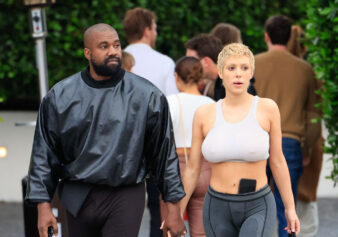By Molly Smith
US credit-card rates have soared past 20%, mortgage costs have climbed to the highest since 2008 and companies are having a harder time borrowing money.
The Federal Reserve’s aggressive rate-hiking cycle to tame decades-high inflation is expected to take months to fully filter through the economy. But the impact has been immediate for the millions of people who need a loan today to pay bills, go to college, buy a home or expand their business.

That’s because the federal-funds rate, which the central bank raised by the most since 1994 this week, is a benchmark for debt that affects consumers and companies big and small in everyday life.
This week’s spike in mortgage rates — the biggest since 1987 — has all but ended plans for people like Dana Bougon who were hoping to buy a house. Rates for a 30-year loan have increased to 5.78%, almost doubling in a year.
“We’re hoping to retire soon and move to North Carolina — but we can’t now with mortgage rates so high,” said Bougon, 58, who lives with her husband outside of New Orleans. “It’s a huge jump when you go from a 3% rate to almost 6%, and I think it’s going to go a lot higher. It will make it out of reach for us.”
As economists debate if or when the Fed’s all-out battle against inflation will cause a recession, financial hardship is already a reality for consumers facing rising food and gas prices. Higher interest rates will make it more expensive for companies to invest, and could mean job cuts down the road — although the unemployment rate remains historically low and layoffs have been mostly limited to industries like housing, crypto and technology.
“If the Fed accomplishes what it’s advertised, that’s going to be different than what most people have experienced in their lifetimes,” said Mark Hamrick, senior economic analyst at Bankrate, a consumer financial services company.
Credit Cards
With inflation taking a bigger bite out of household budgets, consumers have loaded up on credit cards. Issuers typically use the Fed-influenced prime rate as a base to charge interest plus an additional spread. So Fed hikes cause an immediate spike.
“As we see balances continue to rise and interest rates rise and the price of everything continues to rise, it is possible that more people are going to be unable to pay their bills,” said Sara Rathner, a credit-card expert at personal-finance company NerdWallet. “It’s not going to be across the board, but there’s a higher chance of that happening.”
For Annie Brucato, a 67-year-old retiree in Milltown, New Jersey, it’s already a reality. Bills are racking up — everything from electricity to cable. She’s trying to get a personal loan as well as a summer job with flexible hours to help make ends meet. Her one credit card has accumulated roughly $6,000 in debt.
“It just keeps piling up no matter how much I pay,” Brucato said. “I feel like every time I turn around, I’m being nickel-and-dimed to death.”
Housing Costs
Higher mortgage rates are compounding record home prices, and recent data show it’s already been slowing demand in hotspots.
In essence, that’s what Fed policymakers are aiming for: a cooling of the housing market. Fed Chair Jerome Powell said Wednesday that people looking to buy a home “need a bit of a reset.”
It’ll take time, but it’s potentially good news for dog trainer Charlie King, 22, who was looking to buy a home about a month ago with their partner in northern Kentucky, part of the greater Cincinnati area. Together, they got approved for a $200,000 loan and were offered a 5% mortgage rate. They found themselves woefully outbid on every property. King decided to give up.
“I would like to find a home so I can start to do more with my career,” said King, whose rental apartment limits tenants to two pets. “But the housing market is looking pretty bleak, and I can’t afford to be upside down on a loan at my age.”
Bank Loans
Activists rallied outside the Fed’s headquarters earlier this week to remind officials that the tighter policy they’re plotting has a human cost.
Even so, the labor market has remained incredibly tight, with the unemployment rate hovering near the lowest in 50 years and nearly two available jobs for every unemployed person.
Combined with savings accumulated through the pandemic, consumers are still largely in a strong position, which should help shield them from the effects of higher rates, said Michael Garry, founder and chief executive officer of Yardley Wealth Management.
But some cracks are emerging. Applications for unemployment insurance, when smoothed out on a moving average, have risen in nine of the last 10 weeks.
“The worst-case scenario is that companies cut jobs, and the ones that might have expanded don’t expand, then everybody loses confidence and we get the downward spiral into recession,” said Erica Groshen, former commissioner of the Bureau of Labor Statistics, who now serves as a senior economics adviser at the Cornell University School of Industrial and Labor Relations.
More stories like this are available on bloomberg.com




